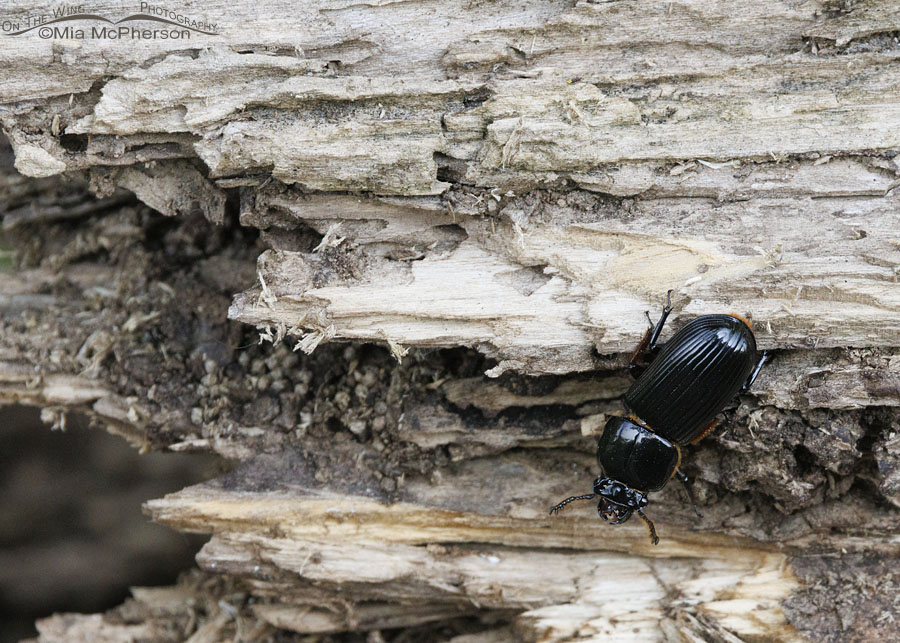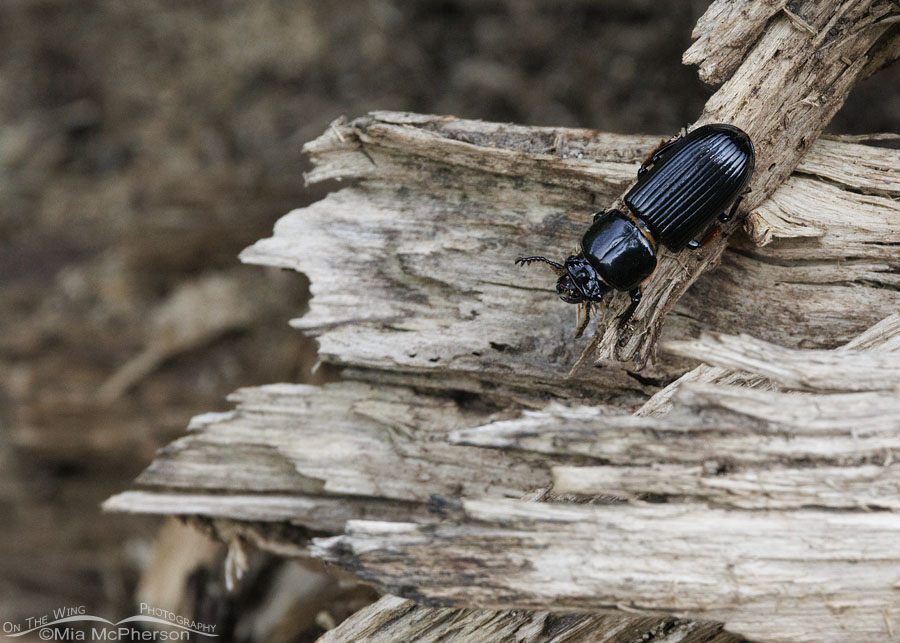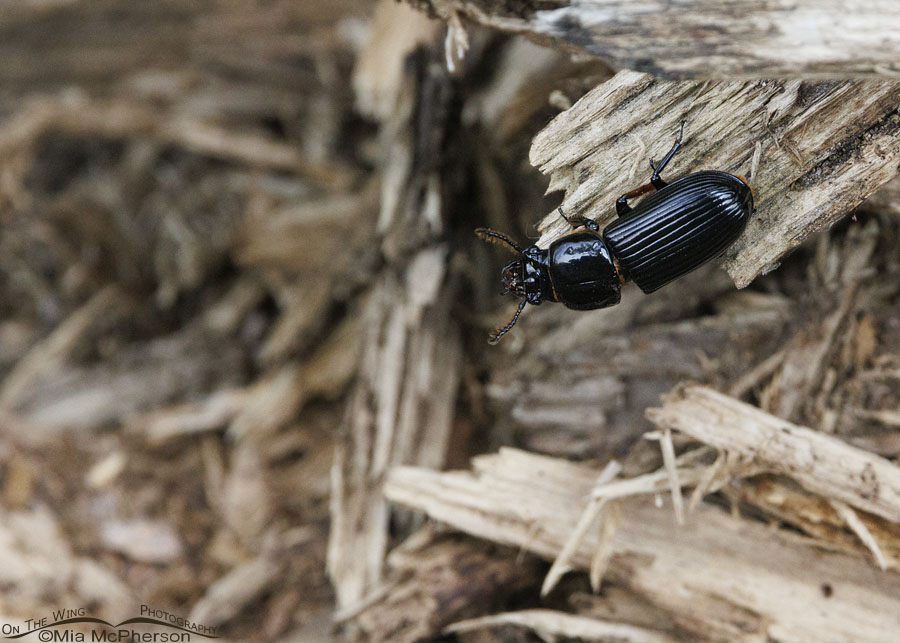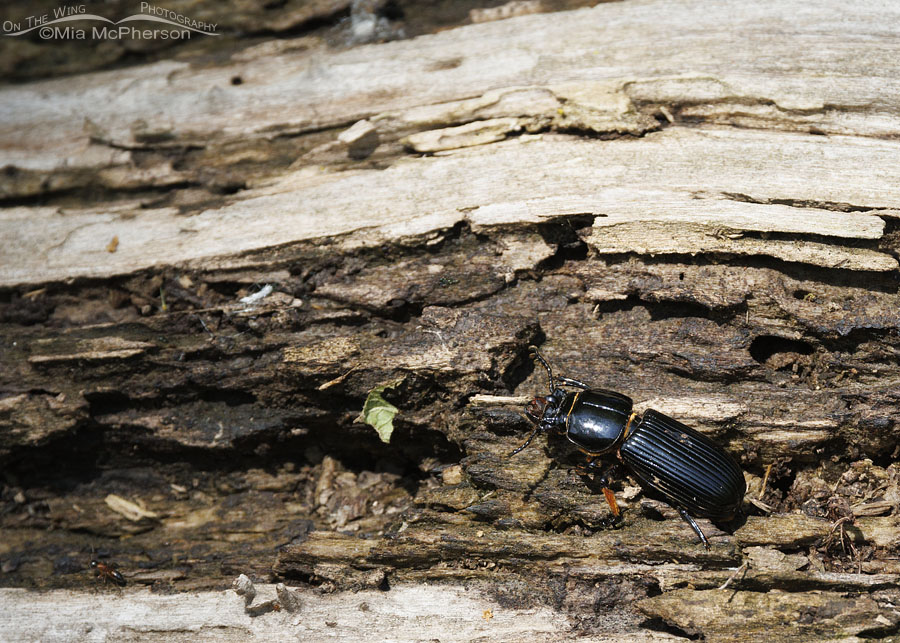I’m focusing on beetles this morning. More precisely, I’m sharing Horned Passalus Beetle photos that I took at Sequoyah National Wildlife Refuge in Oklahoma.
 Horned Passalus Beetle at Sequoyah NWR – Canon R7, f8, 1/1600, ISO 3200, Canon RF 100-500mm at 500mm, natural light
Horned Passalus Beetle at Sequoyah NWR – Canon R7, f8, 1/1600, ISO 3200, Canon RF 100-500mm at 500mm, natural light
Adult Horned Passalus Beetles are shiny black with a series of grooves running the length of the wing covers and a short horn on the front of the head between the eyes.
Horned Passalus Beetles are large beetles, they are about an inch and a half long. They are also called bess beetles, Betsey Beetles and Patent-leather Beetles.
 Horned Passalus Beetle crawling down a fallen log – Canon R7, f8, 1/1600, ISO 3200, Canon RF 100-500mm at 500mm, natural light
Horned Passalus Beetle crawling down a fallen log – Canon R7, f8, 1/1600, ISO 3200, Canon RF 100-500mm at 500mm, natural light
The Horned Passalus Beetles that I photographed at the refuge were found on fallen, decaying logs next to the roads. Wood is a significant part of their diet, and they are considered vitally beneficial because they aid in decomposition.
 Horned Passalus Beetle in Oklahoma – Canon R7, f8, 1/1600, ISO 4000, Canon RF 100-500mm at 500mm, natural light
Horned Passalus Beetle in Oklahoma – Canon R7, f8, 1/1600, ISO 4000, Canon RF 100-500mm at 500mm, natural light
I enjoyed watching these large, shiny beetles through my viewfinder as they crawled around on the logs while I photographed them.
 Horned Passalus Beetle searching for food – Canon R7, f8, 1/800, ISO 640, Canon RF 100-500mm at 500mm, natural light
Horned Passalus Beetle searching for food – Canon R7, f8, 1/800, ISO 640, Canon RF 100-500mm at 500mm, natural light
This last Horned Passalus Beetle photo was taken two days after the first three images on a brighter and sunnier morning. The refuge has a large number of fallen trees where these beetles can be found.
Info about Horned Passalus Beetles:
Horned Passalus Beetles are one of the few species of beetles that exhibit true social behavior. They live in cooperative family groups inside the decaying logs they inhabit. Adult beetles actively care for their offspring, which is a rare behavior in the insect world. They construct chambers and tunnels within the decaying wood to create a protected environment for their eggs and larvae. The family group includes adult beetles, larvae, and pupae, all living together and collaborating for survival.
Life is good.
Mia
Click here to see more of my insect and spider photos.


Great post! Helpful narrative with fascinating pics of a beneficial beetle that we often overlook, ignore or think of as harmful. On the other hand there’s the Calif., Bark Beetle which has decimated our forests and even threatens our ancient bristle cone pine trees. In nature, as it is with humans, here are good guys and bad guys. Thanks Mia.
Hooray for beetles. A necessary and often overlooked part of the ecosystem.
I had no idea that any beetles lived in community. This is fascinating. I wonder if they have any relationship with the fungi that are often found in decaying trees.